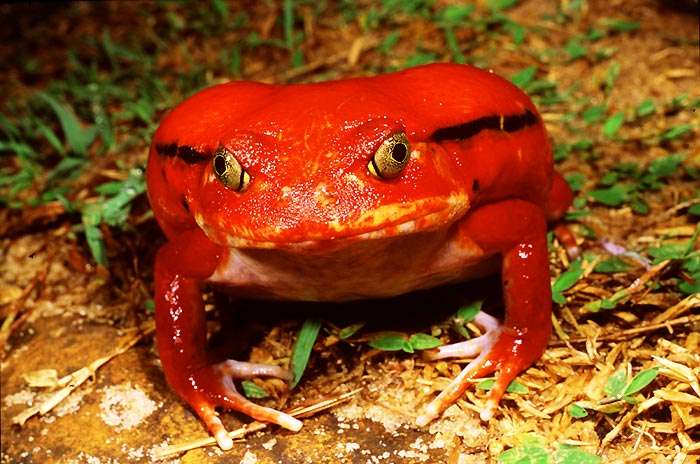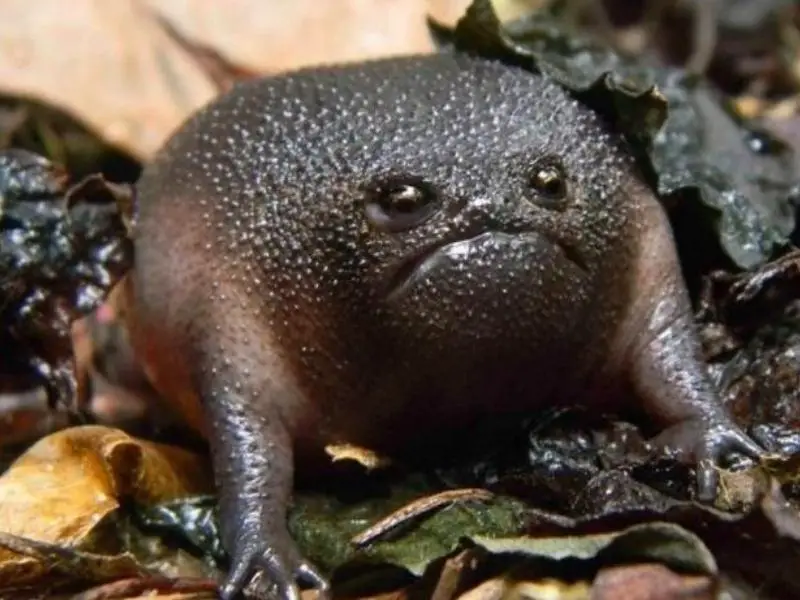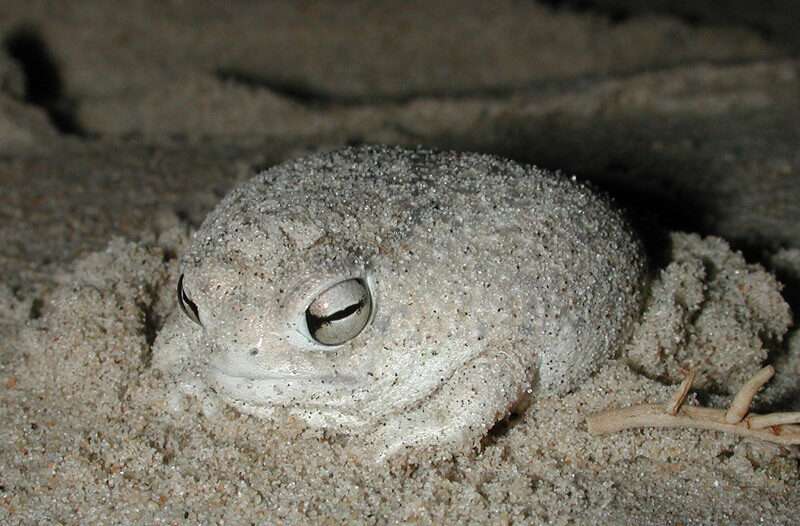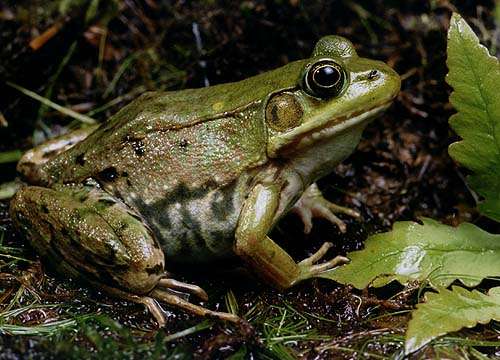
The range of this toad is extensive. It travels through Idaho, Montana, and South Dakota, into western Iowa and western Missouri, south through Kansas, Oklahoma, and Texas, and just into northern Mexico; through New Mexico, Arizona, and into southeast Nevada and southeast California. It also travels through Idaho, Montana, and South Dakota.
This species thrives in any damp environment, including swamps, canyons, and irrigation ditches. Tadpoles go through one season of development. Anaxyrus woodhousii australis (also known as the Southwestern Woodhouse’s Toad), A. w. velatus (also known as the East Texas Toad), and A. w. woodhousii (also known as the Rocky Mountain Toad) are examples of subspecies.
Distribution and Habitat
Dyscophus antongilii, or tomato frogs, are indigenous to Madagascar, more specifically the northeastern region of the island. Areas like Antongil’s Bay, Andivoranto, Maroantsetra, and the Ambatovaky reserve have all received reports of the species. Other localities have been suggested, although it is unclear whether the tomato frog or a closely related species (D. guineti) was present. As long as there is a steady, slow-moving water source and a natural or artificial refuge, such as vegetation and debris, tomato frogs can live in a variety of habitats within this range.
Throughout its range, this species of frog lives in a variety of habitats. As long as there is somewhere to burrow, these environments include both tropical rainforests and forested coastal regions, wet and dry underbrush, and urban settings with variable degrees of disturbance. Eggs are laid in slow-moving or still water, which can be found anywhere from urbanized drainage ditches and pools to natural wetlands. This species’ preferred habitat is unclear; however, it is known to flourish in the range of environments where it is found. Throughout its range, it occurs up to 200 meters above sea level.
Appearance
Because of their skin’s vivid, reddish-orange colouring, tomato frogs get their name. The two sexes present differently as adults. Males are slightly shorter than females, measuring 6 to 6.5 cm as opposed to 8.5 to 10.5 cm for females. Males are likewise known to be less colorful than females, with almost more brown than red coloration. The frog’s colouring changes from reddish to white on its ventral side. Usually, a black stripe runs from the abdomen to behind the eye. As they develop into adults, tadpoles and young frogs are known to range in colour from black to tan. After hatching, adult colouring normally takes many months to develop.

Reproduction
Like most anurans, tomato frogs engage in polygynandrous mating. Males have been captured calling and ambushing females in captive breeding programmes while being subjected to heavy rainstorms that mimic the wet seasons in Madagascar. These circumstances are anticipated to be required for reproduction in their natural habitat. According to studies, Madagascar’s males called for females every month during both the wet and dry seasons. Additionally, tomato frog eggs were discovered by observers in eleven out of twelve months. The majority of studies concur that periods of intense rains trigger sexual activity. Following calling, the frogs start amplexus, which allows them to lay thousands of eggs. Given the correct circumstances, breeding can take place at any time of the year. Sexual maturity is normally reached between the ages of two and three.
Diet
It is believed that the most typical food sources for juveniles and adults of this species are small invertebrates and arthropods. These animals are typically fed insects and worms while in captivity. They might be filter feeders.
Keeping as Pet
Housing
You’ll need at least a 10-gallon terrarium and a shallow water dish (tomato frogs don’t need a lot of water) to provide the ideal habitat for them. Additionally, you should have a thermometer to keep tabs on the temperature and humidity, real or artificial plant decorations, and hiding spots for your tomato frog such as cork bark flats, branches, and hollow logs. Better tanks are those that are larger. Tomato frogs typically benefit from a greater quantity of horizontal area because they are terrestrial (instead of vertical). The substrate for these frogs should be at least two inches deep because they like to burrow.
The tadpoles of tomato frogs emerge about 36 hours after the females lay hundreds of sticky, black-and-white eggs on the water’s surface during breeding. Between the ages of two and four, they will mature sexually after about two months of development.
Temperature
Depending on the temperature of the area your tomato frog is kept in, you might want to use a tiny heating pad or basking lamp to assist maintain a warm environment for it. Keep the temperature between 65 and 85 degrees Fahrenheit; anything higher or lower could harm or kill your frog.
Light
Despite being a nocturnal species, tomato frogs are actually quite simple to care for. They don’t need any special illumination, but they do need a lot of humidity in their habitat. Consider a low power 2.0 or 5.0 UVB/UVA lamp placed on a day and night cycle. A full spectrum bulb should be more than adequate to keep any plants alive and won’t harm your pet frog.
Humidity
Additionally, the humidity in your frog’s environment needs to be maintained between 65 and 80 percent, which may be accomplished by misting daily and using a reliable hygrometer.
Table





